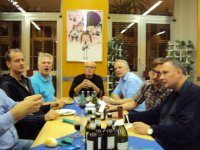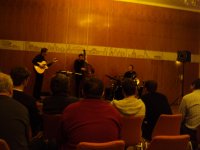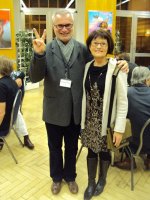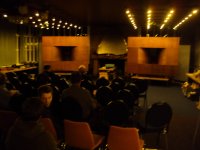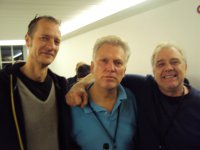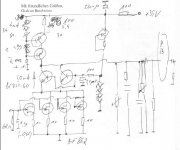Stefanoo is back, hello.
No, this is a Spiral Groove SG1. I am very happy with that deck.
Triing to sell sometink?
And Tanks for TT info look similar from picture.
(me think if Joachim got it it must be good)
So we have:
Low feedback means less extension in frequency of harmonic distortion product generation. This means less likelihood of slewing related distortions, and less "noise modulation", especially in the high frequencies. Balanced topologies don't generate much if any even harmonic distortion product, so there's no 2nd harmonic, which is very arguably the most (or only) desirable of the distortion products. Slight AC imbalance in the push-pull output stage means you get a 2nd harmonic distortion product that dominates over the 3rd. The ideal would seem to be low or no feedback, and avoiding a perfectly balanced topology
Low feedback means less extension in frequency of harmonic distortion product generation. This means less likelihood of slewing related distortions, and less "noise modulation", especially in the high frequencies. Balanced topologies don't generate much if any even harmonic distortion product, so there's no 2nd harmonic, which is very arguably the most (or only) desirable of the distortion products. Slight AC imbalance in the push-pull output stage means you get a 2nd harmonic distortion product that dominates over the 3rd. The ideal would seem to be low or no feedback, and avoiding a perfectly balanced topology
Last edited:
I am back from ETF in Berlin. It was really great, we had lots of fun and 24 hours music.
Here are some pictures.
Here are some pictures.
Attachments
Here is another picture session more focussed on the equipment :Mobile Photobucket
I like the tube amp in the gasoline container.
I like the tube amp in the gasoline container.
really cool sentence !...on developing a neurosynaptic core for a scalable neuromorphic architecture capable of emulating spiking neural networks
TS
Here is the conceptual schematic of the Transimpedance Simplistic, TS in short.
The input is a high Gm transconductance stage with 160mS. This works on a low noise BJT cascode current source.
I will show you the values of the RIAA later today. With that values gain is around 66dB so there could be a volume control in the RIAA and a sensitive amp could be direct fed without a line stage.
The output buffer is from the Paradise. If we use a plus-minus supply on the buffer it could be DC coupled at the output but i think that is too much trouble for too little gain. I think a good cap at the output is just fine.
Here is the conceptual schematic of the Transimpedance Simplistic, TS in short.
The input is a high Gm transconductance stage with 160mS. This works on a low noise BJT cascode current source.
I will show you the values of the RIAA later today. With that values gain is around 66dB so there could be a volume control in the RIAA and a sensitive amp could be direct fed without a line stage.
The output buffer is from the Paradise. If we use a plus-minus supply on the buffer it could be DC coupled at the output but i think that is too much trouble for too little gain. I think a good cap at the output is just fine.
